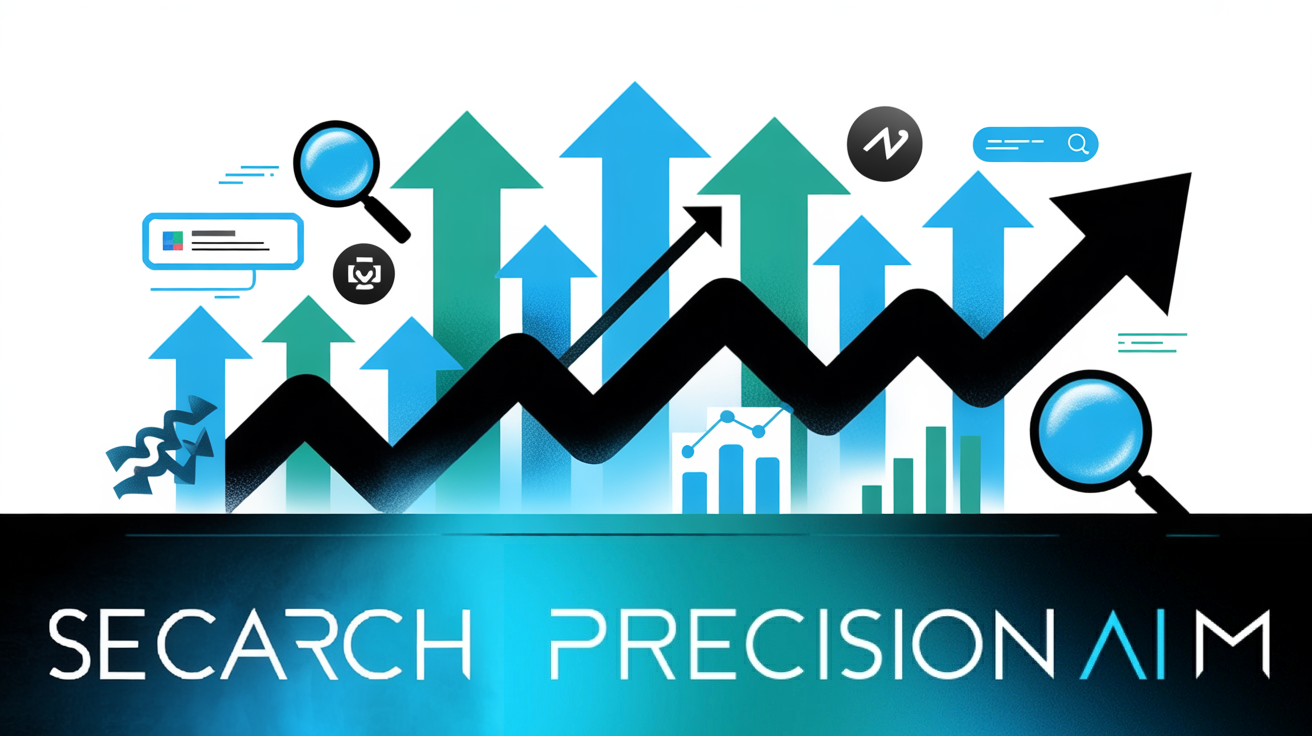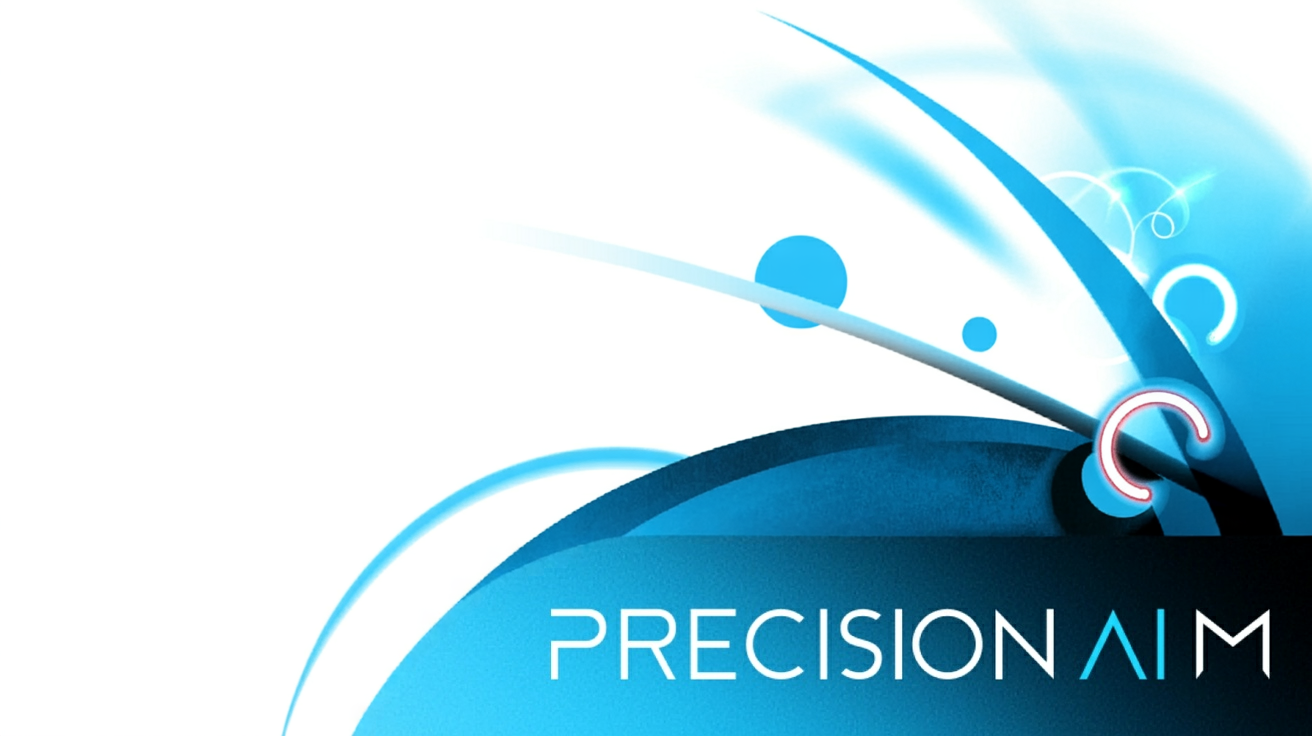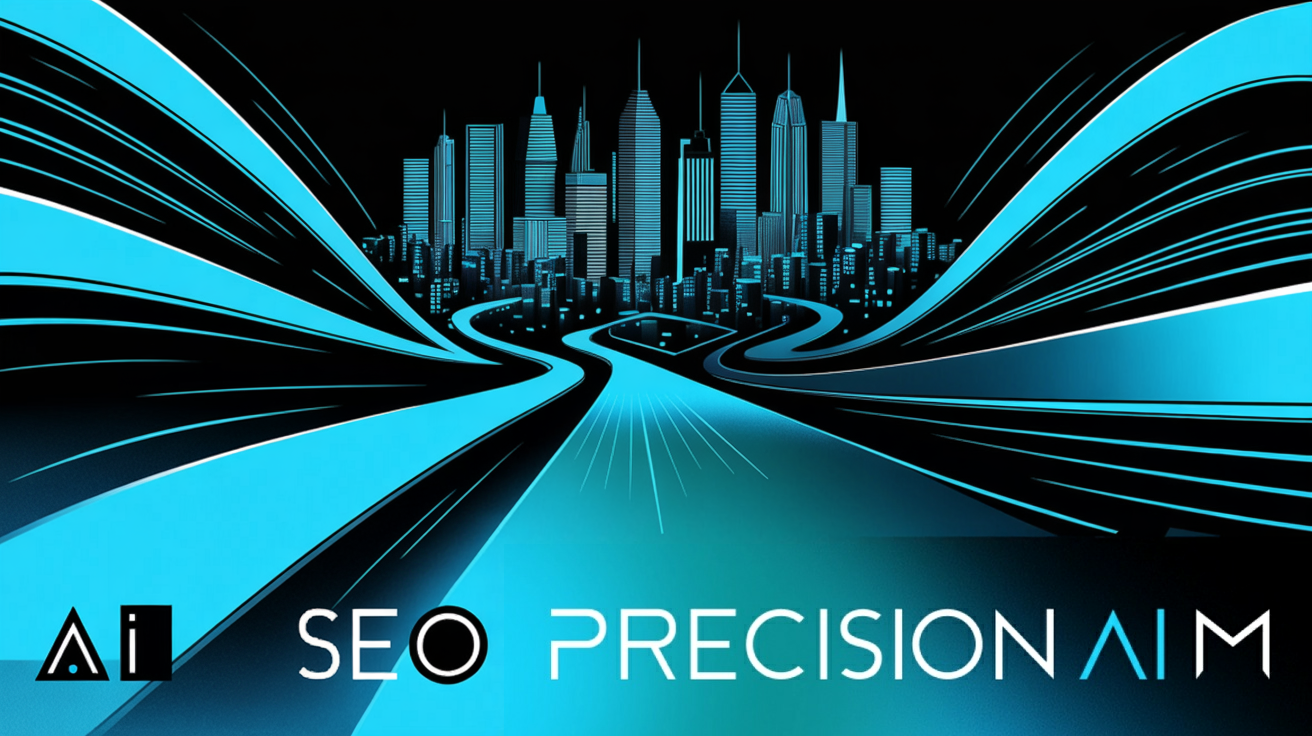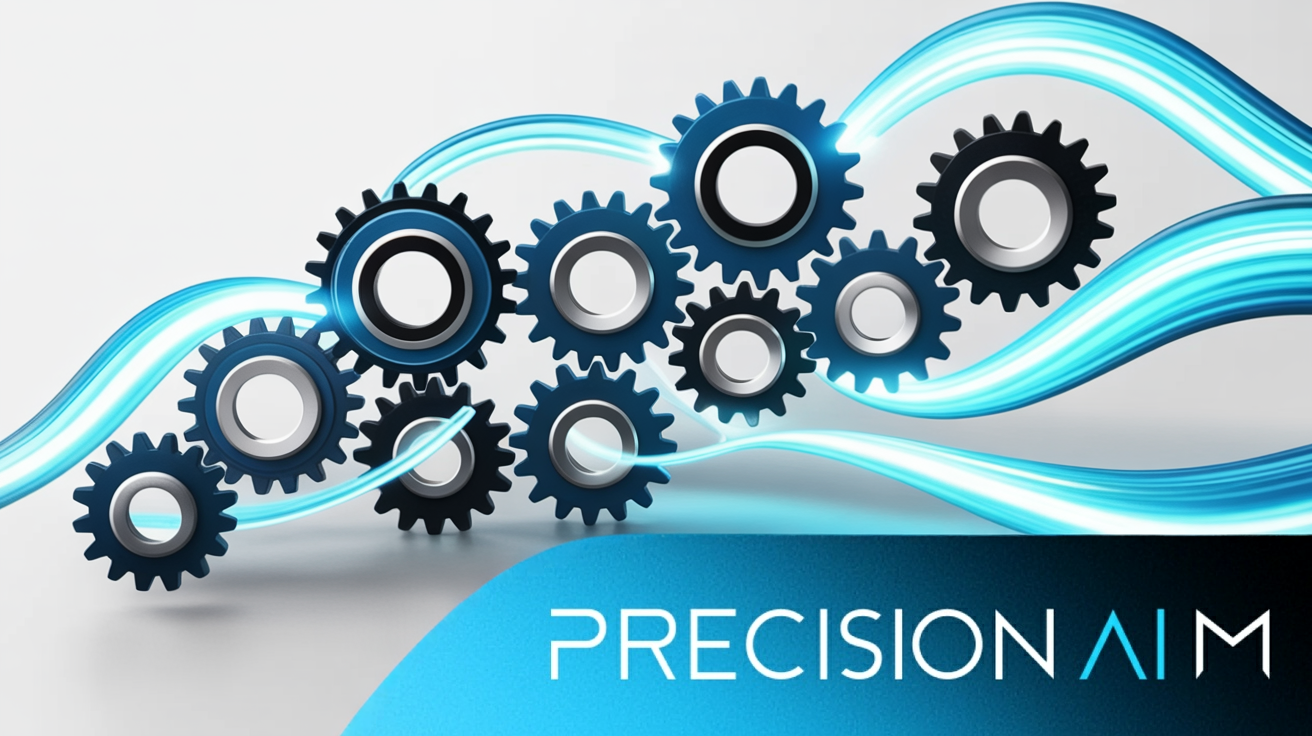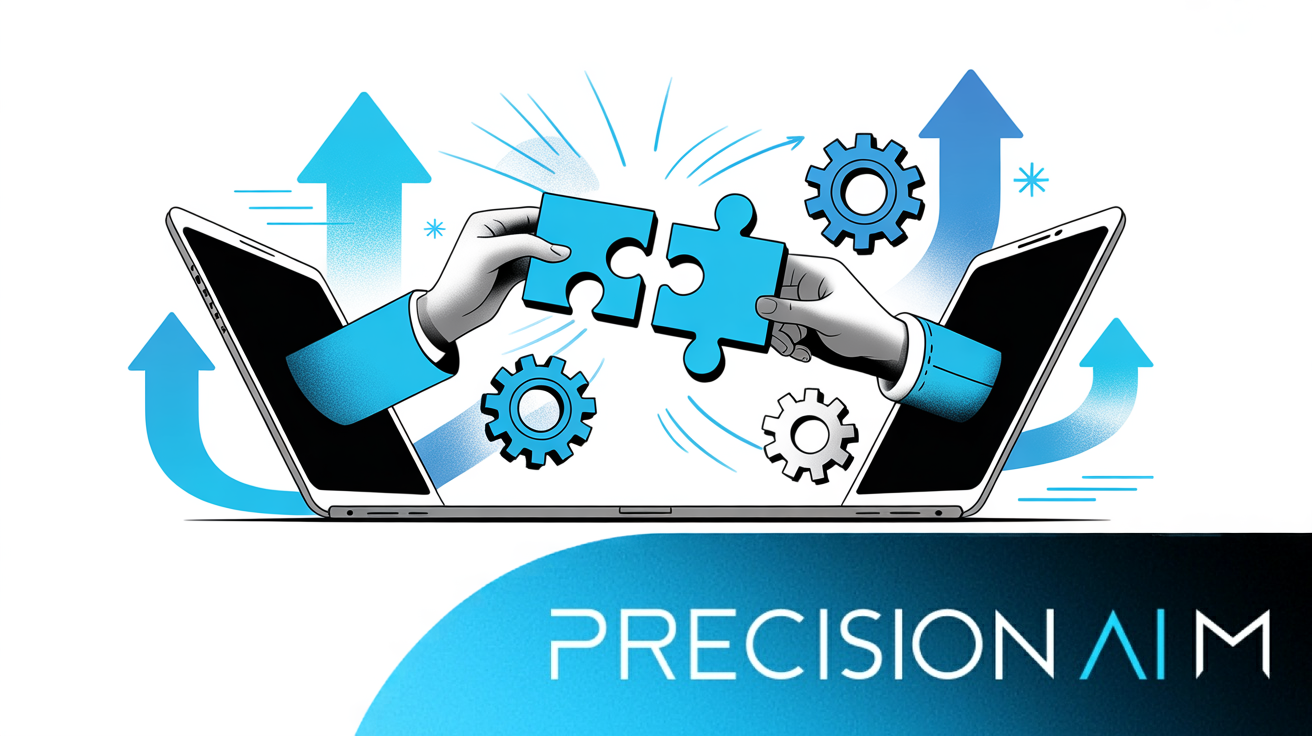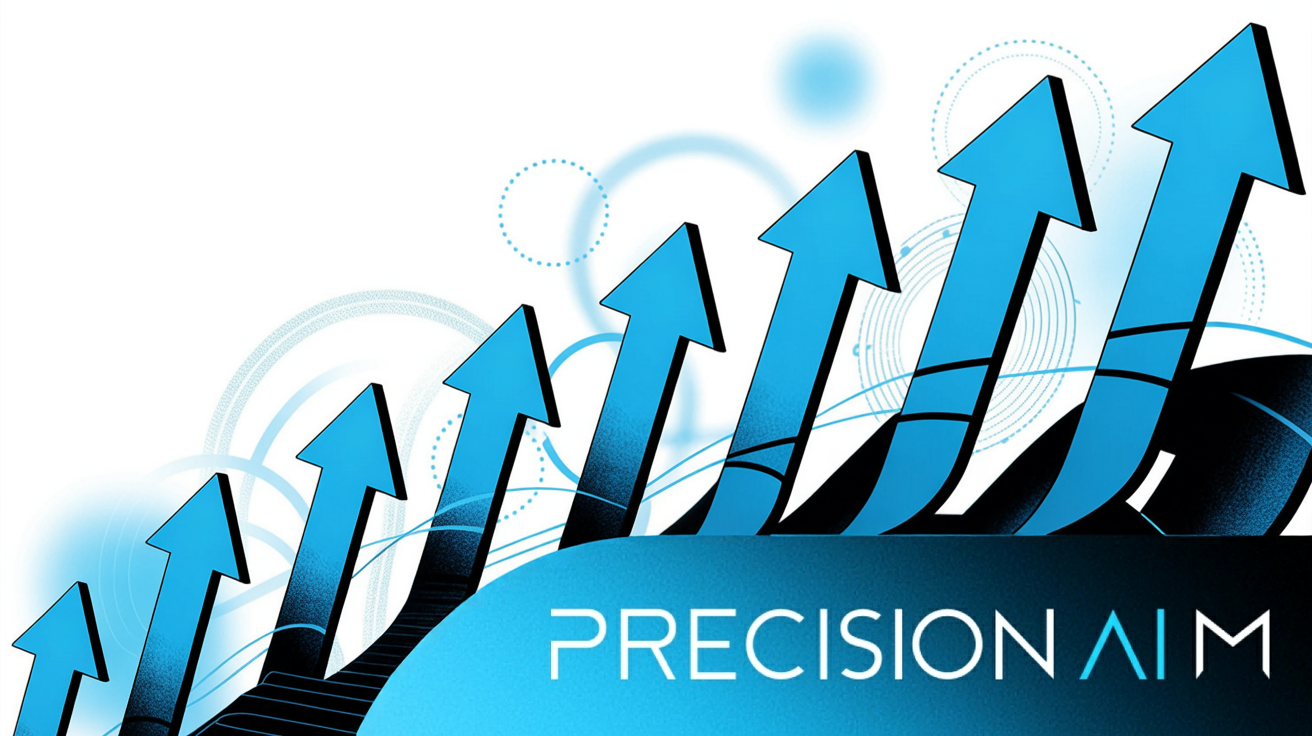Most businesses struggle to connect with customers across both digital and traditional channels, leaving their marketing efforts feeling scattered and inconsistent.
I've seen firsthand how mixing online and offline tactics—when done right—can create a seamless brand experience and drive real results. Hybrid marketing isn't just a buzzword; it's a proven approach that coordinates every touchpoint, making your campaigns more effective and measurable.
In this article, I'll break down exactly what hybrid marketing is, how it differs from single-channel strategies, and why it matters now more than ever. You'll get practical steps for building a hybrid strategy, tips for avoiding common mistakes, and real-world examples from brands like Starbucks and P&G.
You'll also find guidance on choosing the right channels, measuring success, and using technology—including AI—to streamline your campaigns. By the end, you'll know how to map your customer journey, set actionable goals, and future-proof your marketing for lasting growth.
What is hybrid marketing?
Hybrid marketing explained: Clear definition and scope
Hybrid marketing is all about strategically mixing digital and traditional marketing tactics so every channel works together, supporting a unified brand message and seamless customer journey. Instead of running online and offline campaigns as separate activities, hybrid marketing coordinates those touchpoints—think print flyers paired with social ads for an event—so each element fits into the bigger picture.
Why does this matter? It means every step your audience takes feels connected rather than fragmented, turning independent marketing efforts into one orchestrated experience.

Core elements: Digital, traditional, and omnichannel coordination
This approach brings together several tried-and-tested tools. On the digital front, you’ve got:
- Digital channels
SEO for discoverability; blogs and content for engagement; paid ads reaching target demographics; social media sparking awareness; emails building ongoing relationships.
Traditional methods pull their weight too, with:
- Traditional channels
TV and radio broadening reach; print ads targeting local audiences; direct mail delivering personal offers; events driving in-person engagement; PR safeguarding reputation.
Here’s where omnichannel coordination comes in. Instead of isolated campaigns, everything supports the journey—a print ad might sport a QR code leading to an app offer, or an event gets dual promotion via email and social.

Difference between hybrid and single-channel marketing
What’s the advantage? Take a look:
| Aspect | Hybrid Marketing | Single-Channel Marketing |
|---|---|---|
| Reach | Broad (online/offline) | Limited (one channel) |
| Engagement | Multiple touchpoints | Singular |
| Trust | Unified presence | Isolated, variable |
| Data | Cross-channel metrics | Siloed, fragmented |
| Experience | Seamless journey | Disjointed |
Hybrid campaigns often drive 20–30% higher engagement and order rates than single-channel methods.

Excluded meanings: Only marketing—not work models or vehicles
Let’s be clear: this blog is purely about hybrid marketing—the combination of digital and traditional channels. It’s not about hybrid working, vehicles, or IT models.
Common mistakes in hybrid marketing—and how to avoid them
And what about common slip-ups? Here’s how to steer clear:
- Treating channels as silos
Foster cross-functional teams - Inconsistent messaging
Centralise brand guidelines - Ignoring the customer journey
Map every stage and integrate support - Fragmented measurement
Adopt unified analytics
When your teams, messaging, and measurement all work together, the real power of hybrid marketing comes alive.
Why Is Hybrid Marketing Critical Today?
Mapping and Optimising Multi-Channel Journeys
Customers rarely stick to one channel—most bounce across at least six touchpoints before making a decision. Over 50% will mix four or more digital and traditional channels in a typical journey.
To make sense of these complex journeys, you need to map them out. Google Analytics 4, Salesforce CRM, and Customer Data Platforms (CDPs) let you spot each key touchpoint. Setting this up usually means a day or two with data analysts and cross-functional teams.
But mapping alone isn’t enough. It’s essential to validate that every touchpoint gets tracked. If Net Promoter Scores (NPS) and customer retention start improving post-integration, it proves your approach works.
Integrating solutions like receipt validation is key to linking physical purchase touchpoints with digital engagement. This connection provides the concrete data necessary for analytics platforms to accurately report on customer retention and demonstrate the effectiveness of hybrid loyalty initiatives.
Is Hybrid Marketing Necessary? Channel Selection Criteria
Is hybrid marketing always the right move? It’s especially valuable when engagement drops, you have multiple locations, or your audience is varied.
Your channel choices should match your audience: Gen Z is all about digital, whereas Boomers lean towards print and radio. Platforms like Claritas or Nielsen Scarborough—plus channel dashboards—help you focus resources.
When budgeting, plan for a three-to-six-month pilot, allowing 20–50% more spend for experimentation. Run A/B tests: compare hybrid and single-channel campaigns, and watch for improvements in cross-channel engagement.
Delivering Hybrid Experiences, Avoiding Pitfalls
Hybrid marketing comes alive through smart tactics—QR codes, loyalty apps, and blending email with in-store offers make interactions seamless. You’ll need unified data and teams working closely together.
The pitfalls? Disjointed messages and data silos. Fix this with platforms such as Braze or Iterable for messaging and Snowflake or Segment for unified data. Dedicate two to five staff hours a month for monthly audits, and invest £200–£2,000 on tools. Automate digital follow-ups within 48 hours of events.
You’ll know it’s effective when messaging is always on point, responses are speedy, and sentiment results improve.
Stay Ahead or Risk Falling Behind
Hybrid adoption keeps climbing—mid to large brands invest £500,000+ each year. Pilots run three to six months, with full rollouts spanning six to twelve.
Aim for 10–30% gains in engagement and retention every quarter. And keep your eyes peeled—if long-term engagement drops, churn rises, or you notice declining NPS or lagging competition, act swiftly.
If you hit fewer than 75% of your hybrid KPIs after a year, that’s your sign to trigger action plans—no delay.
Core Business Benefits of Hybrid Marketing
Demonstrated Revenue Growth: Case Studies and Statistics
Let’s talk numbers—the results from hybrid marketing simply speak for themselves.
The 2022–2023 Tide Pod Challenge campaign by P&G is a brilliant example. They combined TikTok influencer content, TV ads, and in-store promotions, leading to a 19% year-on-year sales rise in Q1 2023. Digital engagement shot up 42%, and foot traffic in stores increased by 17%. Even better, cost-per-acquisition (CPA) dropped 28% compared to previous single-channel efforts, thanks to stronger connections between digital and physical campaigns.

Starbucks followed a similar path with their 2023 “Reward Together” hybrid campaign, merging app offers, emails, and in-store QR promotions. In just nine months, active loyalty members jumped 13% (27.4M to 31M). Same-store sales were up 7% year-on-year, and CPA plummeted from $14.20 to $9.80, a 31% improvement. Average order value climbed 22% for app users—clear proof that cross-channel integration boosts customer spending.
Meanwhile, Cadbury’s 2024 B2B hybrid campaign used Facebook data to serve up hyper-personalised video ads.
They reaped a 65% boost in click-through rates and a 22% rise in sales-qualified leads over its 2022 baseline.
Industry-wide, the global omnichannel marketing and analytics sector swelled from $29.6bn in 2022 to $35.7bn in 2023 (CAGR 21.3%), with a typical 18% median CPA reduction showing just how much more efficient these approaches are.
Expanding Reach to Fragmented Audiences
But what about your reach? Hybrid marketing lets you meet people wherever they are.
Imagine a customer’s journey: they notice a QR code in a print ad, scan it to your site, check social reviews, see a digital offer, then take up an in-store promotion. According to IAB and PwC, hybrid campaigns connect across six or more channels per buyer—reaching audience segments you’d otherwise miss.
Driving Engagement and Loyalty Increases
And it’s not just about getting noticed. Hybrid strategies sustain genuine engagement and repeat buying.
Starbucks’ loyalty programme saw 55% engagement rates and 2.5x more repeat purchases than past single-channel efforts. Nike’s “Play New” initiative fuelled a 16% lift in direct-to-consumer revenue and digital sales went up 24%, with results driven by a clever combination of app notifications and real-life events.
Boosting Cost Efficiency and Reducing CPA
How you spend matters. Leading hybrid budgets often split 40–60% digital, 20–40% traditional, and 10–20% on influencers or content. These flexible strategies let you reallocate spend quickly and save on CPA—typically 25–35% less. Setting up alerts to flag underperforming channels and using micro-budgets helps keep efficiency high.
Enabling Competitive Differentiation and Future-Proofing
Here’s the big advantage: brands like Nike and Heinz use hybrid tactics to strengthen brand recall, adapt quickly in volatile markets, and get noticed above competitors. During privacy rule changes and COVID-19, they shifted budgets within hours using unified dashboards—showing just how much hybrid approaches boost resilience and set you up for long-term growth.
How can businesses implement a successful hybrid marketing strategy?
Step 1: Set Clear, Measurable Objectives for Hybrid Campaigns
It all starts with setting goals—real, measurable targets that tie digital and traditional marketing together, driving the entire business towards one outcome.
So, how do you actually do this? You take those broad company ambitions and sharpen them into specific campaign goals—and the SMART framework is your toolkit here.
That means every goal is Specific, Measurable, Achievable, Relevant, and Time-bound.
Picture this for a hybrid campaign: “Increase multi-channel leads by 20% in six months across both online (social, SEO, email) and offline (direct mail, events) channels.” Straightforward, right?
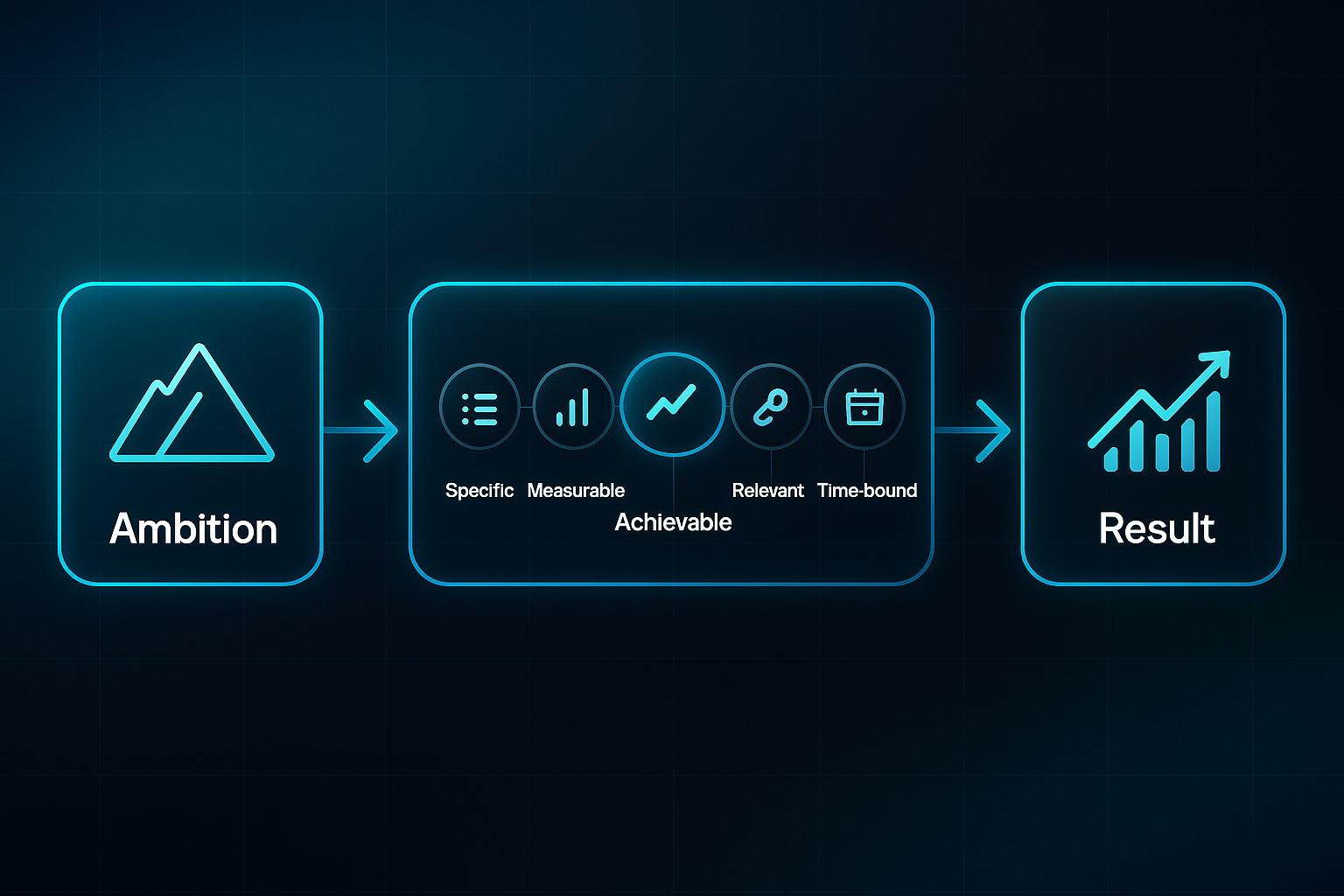
But before anyone starts writing objectives, you’ve got to tick off some essentials.
Next, you’ll need to get your resources and team lined up. Here’s the checklist:
- Analytics platform
Google Analytics 4 (free), GA4 360 (from $50,000/year), or another tool for cross-channel measurement. - Collaborative planning tool
Asana (free for up to 15 users), Monday.com (£9–£19/user/month), or Trello to keep everyone accountable. - Key personnel
Marketing director (campaign owner), channel leads (for digital/social, traditional/PR, data/IT), plus any external consultants if needed. - Projected time commitment
Expect 20 to 40 team hours spread across 2–4 weeks—enough to run workshops, review data, and build consensus.
And here’s the real secret: Everyone must be briefed on the business vision, old performance benchmarks, and what you’ve got in the pot for traditional and digital spend.
SMART Goal Construction and Baseline Setting
Once your team’s onboard, it’s time for a focused workshop—book out 8–16 staff hours—to hammer out goals that genuinely drive results.
How would you break down the process?
- Audit past campaign data
Spend 2–4 hours with the analytics tool to set benchmarks for every channel. - Draft those SMART objectives
You might set targets like “Lift foot traffic by 15% and newsletter sign-ups by 30% by end of Q3,” making sure both online and offline are covered. - Workshop the goals with digital, traditional, sales, and exec leads
Check every KPI makes sense for your business and fits your resources. - Document what you’ve agreed using a collaborative dashboard
Google Data Studio, Looker Studio Pro at £9/user/month. Versioning is vital, so you can track changes and roll back if priorities shift.
If done right, every stakeholder should be able to recite the core SMART goals—that’s your sign of true alignment.
The dashboard acts as a memory bank for previous goals, so you always know where things stand.
Validation, Monitoring, and Review Processes
Let’s talk about what happens once the goals are set.
You want regular KPI reviews—most hybrid campaigns go monthly.
That dashboard becomes your command centre, letting you compare actual progress to what you set out to achieve.

See a main KPI lagging 15% or more behind over a quarter? That’s your cue to intervene immediately, whether it’s reallocating resources or pivoting the campaign.
Troubleshooting and Safety Nets
Now, even with the best-laid plans, things sometimes go awry. What then?
- Dashboard version control saves you
If new goals don’t work or priorities shift, you can revert back in minutes. - Vague objectives? Gather the original team and go back to SMART basics
Every goal has to be actionable and measurable. - At the start of every campaign, check that all major players can state the top goal and how their team contributes
This confirms true understanding and team alignment. - Accountability unclear on a KPI? Appoint a responsible channel lead straightaway
This ensures there are no gaps in ownership of measurement or actions.
With these checks and fallbacks, your digital and traditional teams will stay in lockstep, driving campaigns that pack a punch and deliver on those unified business objectives.
So, implementing hybrid marketing isn’t a wild leap—it’s a process of setting up clear goals, building a toolkit, and having a safety net for the journey.
You lay the groundwork, and every channel—online or offline—moves together, amplifying what would otherwise be isolated efforts.
How and When Should Brands Transition to Hybrid Marketing?
Recognising Signals for the Right Moment
So, when’s the right time to switch to hybrid marketing? Watch for unmistakable clues that your single-channel approach isn’t delivering like it used to.
Start by checking your sales and lead growth. Two or more quarters of flat results are your first hint—if business isn’t climbing, your tactics might be stalling.
Next up, look hard at engagement rates. A 20% or greater drop in website visits, email clicks, or social interactions year-on-year signals that customers are tuning out. That’s the perfect moment to rethink your strategy.
And don’t ignore your cost per acquisition (CPA). If CPA jumps by over 20% with no obvious reason, across digital or traditional channels, it’s time for a new tactic.
Then there’s disconnected performance across channels. A surge online but slump in stores, or vice versa, often means your presence feels fragmented, not unified. Hybrid marketing can help link these touchpoints.
Listening to What Customers Want
You should also listen to your buyers. If more than 40% of your survey responses ask for a smoother, blended experience—where online and offline easily mesh—that’s a sign the market is ready.
A practical way to check? Ask: “How valuable would integrated online and offline experiences be for you?” If the replies show strong interest in features like redeeming digital offers in-store, it’s your signal to act.
Industry and Competition Signals
Keep tabs on competitors, too. Tools like SEMrush, SimilarWeb, or Brand24 reveal sudden spikes in a rival’s web traffic or ad spend. If you spot a 15%+ jump in these areas along with improved sentiment, those brands are probably benefiting from hybrid campaigns.
- Review KPIs and feedback
Combine business results, customer survey trends, and what competitors are doing. - Threshold check
If you see two or more warning signs for two quarters running—and major competitors go hybrid—it’s time for your own pilot.
Spotting these signals—across metrics, customer voices, and market shifts—helps you make a timely, evidence-backed move to hybrid marketing and keeps your brand one step ahead.
Your Competitors Are Using AI. Are You?
We help companies transition into the new age of marketing.

Hybrid marketing in action: Examples and case studies
Let’s jump into hybrid marketing as it actually plays out on the ground. If you’re curious about real campaigns you can replicate, these examples show how digital and offline tactics collide—and create measurable results.
UNIQLO’s Interactive Billboards: Linking Offline and Online
UNIQLO made a splash with interactive billboards that connected passers-by to campaign microsites. QR codes invited smartphone users to play online games and unlock instant discounts.
Want to adapt this? Set up posters or local prints in key spots. Add a QR code driving people straight to a game or an offer page built via Canva or Google Sites.
Keep fulfilment simple—small businesses use Google Sheets or Bitly for tracking scans and redemptions.
Your metric: If redemptions fall below 5% week-on-week, update locations or incentives.
Small shops use windows or handouts—enterprises can try event banners or outdoor ads.
Uber & Sky’s Partnership: Multi-Channel Rewards
Uber and Sky partnered around a TV premiere, sharing codes live. Users entered codes in the Uber app for Sky reward rides.
You don’t need TV budgets. Team up with a local business for exclusive codes via email, printed receipts, or at events.
Track them in your CRM or point-of-sale app. For tight teams, a Google Form suffices; bigger brands layer in Salesforce or a loyalty platform.
Escalate if uptake drops 10% week-on-week. That’s a signal to retarget or adjust promotions.
Coca-Cola’s Festival Playbook: Triggering User-Generated Content
At festivals, Coca-Cola’s QR codes let fans upload photos for rewards—sparking user-generated content (UGC) and digital buzz.
You can emulate this with printed flyers or table tents, prompting uploads via Instagram.
Lean teams use Canva for assets and built-in analytics; enterprises may automate through Hootsuite or Sprinklr.
Watch the numbers: If UGC dips below ten a day or engagement stalls over three days, refresh prompts and rewards.
Unilever’s “Shop and Win”: Connecting In-Store and Digital
Unilever linked purchases to digital rewards with app-based entry.
For SMBs, verify receipts manually using Google Sheets or Trello; larger outfits automate redemption with HubSpot or Zendesk.
Recommendation: If digital claims lag by 20%+ versus in-store after a week, audit tracking and boost staff reminders.
Pull-out Matrix: Picking the Right Platforms
Here’s a quick reference for tool selection:
- Canva – free – 1 user – SMB
Easy QR flyer creation and graphics. - Google Sites – free – 1–5 users – SME
Launch microsites for campaigns. - HubSpot Enterprise – £X – 10+ users – Large org
CRM, tracking, automation. - Salesforce CRM – £X – 20+ users – Enterprise
Multi-channel orchestration.
For best results, set KPI alerts, document handovers, and always have a support plan.
Hybrid marketing, when done like this, isn’t a theory—it’s a playbook any size business can run with.
Measuring Success: Hybrid Marketing Metrics and Attribution
How can you be sure your hybrid marketing strategy is hitting the mark? The answer lies in picking metrics that show genuine impact across both digital and offline campaigns. It’s not just about clicks and impressions—real success tracks every interaction.
Which Hybrid Marketing KPIs Matter Most?
You'll want to measure engagement widely and deeply. For digital, keep tabs on click-through rates (CTR), conversion rates, and cost per acquisition (CPA). For offline, add metrics like event attendance, voucher redemptions, or phone call volumes. And softer data matters too—Net Promoter Score (NPS) or satisfaction surveys shine a light on brand perception.

What about clear checkpoints? Set cut-and-dried targets: “Increase website traffic 22% after using print-plus-social ads,” or “Boost redemption rates 8% via flyers and QR codes.” These benchmarks guide you—if growth flatlines for two weeks, audit your message or where you advertise.
Tracking Multi-Touch Attribution: Choosing the Right Model
Attribution helps single out what’s actually working. With loads of customer touchpoints, last-click is outdated. Look at multi-touch attribution—linear, time decay, or position-based all spread credit in different ways.
Pick from Google Analytics 4 (free for most), HubSpot Enterprise (£X/month, 10+ seats), or Salesforce Marketing Cloud (£X/month, 20+ seats)—each sets up attribution. Allow a day or so to integrate, and ensure your data sources (POS, call tracking, CRM) are ready.
Every model has limits. Linear spreads credit equally—maybe too blunt if one channel truly drives results. Time decay gives bigger credit to recent steps, but may overlook earlier influence. Trial two models for a month, and go with the one best matching your sales reality.
Validation, Troubleshooting, and Making Metrics Matter
Regular reviews are key—monthly. If a KPI goes off track (blended CPA jumps 20%, or social drops 15%), dig into those channel reports.
Which action sealed the deal—a live event or an email blast? Attribution findings shape future campaigns and guide spend, ensuring you use data for business decisions.
This map-measure-adapt cycle is central to hybrid strategy, turning cross-channel experiments into sustained advantage.
How can technology and AI solutions enable hybrid marketing?
Harnessing Automation, Analytics, and AI for Hybrid Campaigns
So, how do brands really make hybrid marketing work? Technology is the driving force—AI and automation platforms now coordinate campaigns, accelerate delivery, and connect digital and traditional channels.
Platforms like Salesforce Marketing Cloud, HubSpot, and ClickUp AI automate campaign setup, lead scoring, and reporting. In 2024, 69% of marketers integrated AI, seeing ROI gains and 47% better forecasting accuracy. Fortune 500 brands often cut manual reporting errors by 35% and validated results faster.
Businesses that use AI in at least three core marketing functions have seen a 32% average increase in ROI compared to the previous year.
What stands out? Unified dashboards collect analytics from every channel, letting marketers instantly spot top performers and shift spend quickly. Automated workflows can cut setup time nearly in half and reduce targeting mistakes.
Here’s how these features help day-to-day:
- Unified dashboards
Pull analytics from all channels so brands can adapt budgets on the spot. - Automated workflows
Save time and minimise set-up mistakes. - Best practice
Set monthly data audits with automated alerts for missing KPIs or sources.
Accelerating Hybrid Content with Generative AI
Generative AI tools—like Jasper or HubSpot’s GPT-4—make content creation and customisation lightning fast. Teams create assets for different segments, A/B test ideas live, and roll out changes in minutes.
The impact? Early adopters in 2024 saw 47% faster production and 32% higher email engagement.
- AI content personalisation
Automatically build creative for multiple audiences and refine based on results. - Validation
Benchmark engagement rates pre- and post-AI; tweak with built-in analytics.
Unified Analytics and Success Validation
Tools like Looker, BigQuery, and ClickUp AI provide transparent cross-channel measurement, sharpening tracking, attribution, and quality checks.
- What to include
Automated data pulls, channel KPIs, and attribution for each stage. - Validation
Review dashboards monthly, using anomaly detection to flag gaps.
Hybrid Solution Spotlight: SEOSwarm

AI-Powered
SEO Content Strategy
See the AI platform that's replacing entire content teams (with better results).

SEOSwarm blends AI-driven SEO content and expert support. Clients reduce setup-to-launch times, unlock transparent analytics, and see measurable campaign lifts.

Supplementary Automation: AI Automations
Precision AI Marketing’s AI Automations streamline workflow—automating demo booking, lead qualification, and customer data syncing. Regular reviews keep automations sharp and connected.
My Final Thoughts on Hybrid Marketing
Hybrid marketing isn’t just a trend—it’s the answer to fragmented customer journeys and rising channel fatigue. I’ve seen businesses unlock 20–30% higher engagement simply by coordinating digital and traditional tactics, rather than letting them run in silos.
If you’re ready to act, start by mapping your customer touchpoints and setting SMART goals that span online and offline. Build cross-functional teams, invest in unified analytics, and run monthly audits to catch gaps early. Test hybrid campaigns against single-channel efforts, and let real data guide your next move.
Here’s my advice: treat hybrid marketing as a living system, not a checklist. The brands that thrive are those that adapt quickly, measure relentlessly, and connect every channel to a unified brand experience. In a world of endless options, seamless coordination is your edge.
- Wil


